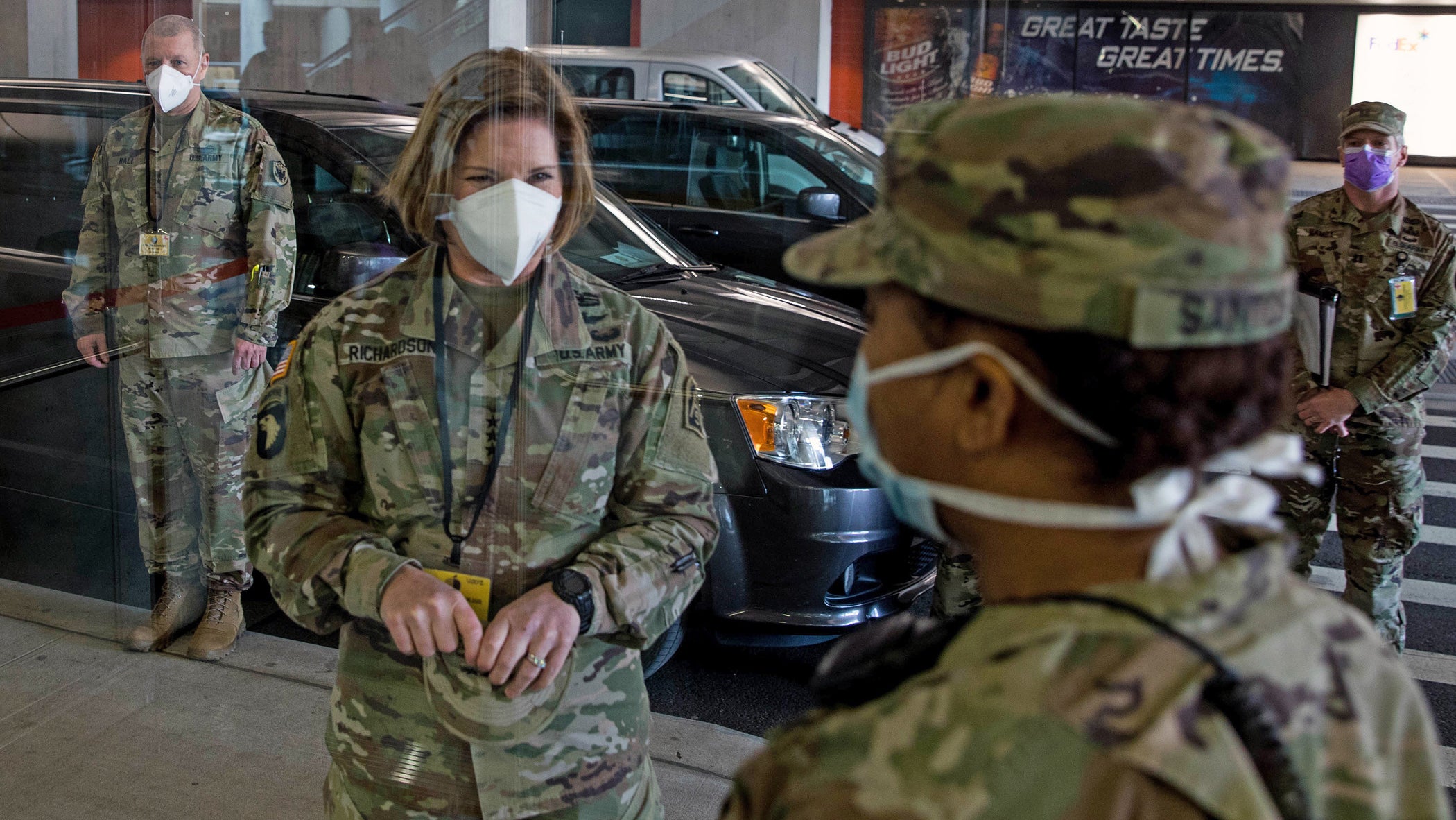Army North Ramps Up COVID-19 Response
Army North Ramps Up COVID-19 Response

U.S. Army North, already overseeing DoD COVID-19 operations in Texas, will deploy military medical personnel to California as the global fight against the novel coronavirus continues.
“We’re working with FEMA across the entire country to determine what other military capabilities may be needed to assist in this fight,” Lt. Gen. Laura Richardson, Army North commander, said July 14 during the Association of the U.S. Army’s Thought Leaders webinar series.
About 580 military medical and support personnel have been assigned to help with COVID-19 operations in Texas, and another 160 personnel will soon head to California.
An Urban Augmentation Medical Task Force—an 85-soldier Army Reserve unit made up of clinic staff, nurses, preventive medicine experts and other medical specialists—is currently deployed to help five San Antonio hospitals while a second task force is in Houston. Additional teams were sent to help with statewide efforts, according to a press release.
Richardson said the command will take another look at mobilized forces in August or September to reassess “if we need to extend those forces a little longer.”
“We obviously don’t want to keep forces mobilized if we don’t need them, but we want to be ready to respond for exactly this kind of a situation,” she said.
Richardson said Army North is “postured very well” to respond to current and future COVID-19 peaks, adding that “everything did not de-mobilize” after earlier efforts wrapped.
“We’ve kept some forces mobilized,” she said. “NORTHCOM also kept some medical capability on ... prepared-to-deploy orders for exactly this kind of response that we’re cranking up again.”
As COVID-19 response efforts ramped up in March, Army North, as the Joint Force Land Component Command for U.S. Northern Command, sent troops to augment staff at 11 New York City public hospitals and staff a field hospital at the Javits Center.
By the time initial response efforts concluded, the Joint Force Land Component Command had supported 134 FEMA-approved missions with the help of almost 9,000 service members and employed more than 3,100 medical personnel to staff civilian hospitals and alternate care facilities in nine states, according to information from Army North.
“It’s going into the hospitals that was a game changer for us,” Richardson said, referring to the existing infrastructure compared with field hospitals. “That is really a lesson learned and best practice.”
She cited the standardization of personal protective equipment procedures, including the way it is put on and taken off, across DoD as another lesson learned, calling it “the key to our success” in protecting service members.
Richardson also advocated for the “immediate mobilization of Army North subordinate units,” including National Guard and Army Reserve units. “At times we need these units to deploy capabilities in a couple days, not in a couple weeks,” Richardson said. “I think, quite honestly, an overhaul of our dated mobilization process would be very helpful.”
As the summer continues, Army North is preparing for what may come next, whether it’s a second wave of the coronavirus, hurricanes or forest fires, she said.
“We’re also working very hard to plan for what may be coming next,” Richardson said. “Our motto is ‘Strength of the Nation,’ and we’re working nonstop day and night to support our fellow Americans.”

